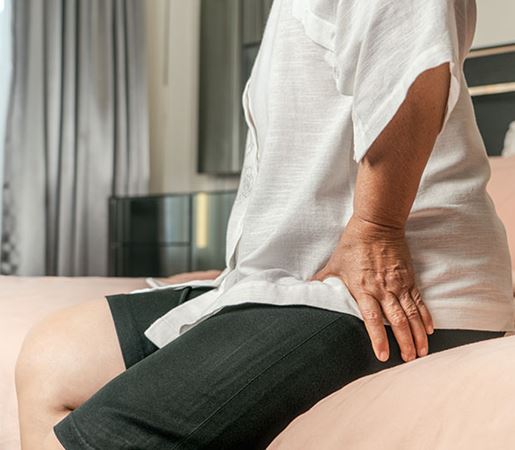Bursitis
What is bursitis?
Bursitis is a painful swelling of the bursa that usually occurs through irritation, pressure or overuse. The bursae are fluid-filled sacs that are located throughout the body and are responsible for cushioning the bone from any soft tissue. They help to reduce friction and enable the joint to operate smoothly and evenly. The trochanteric bursa on the outside of the hip is particularly prone to bursitis and this condition (trochanteric bursitis) is thought to be caused by an injury or weak supporting muscles.
Female and middle-aged patients are more likely to suffer from bursitis, and symptoms include pain and limping. Repeated episodes are considered a chronic condition that over time may result in reduced quality of life.
How is it treated?
In most cases bursitis is just a short-term irritation that can be resolved through rest, anti-inflammatories and physiotherapy. It rarely requires surgery and the strategies focus mainly on decreasing the inflammation, maintaining mobility and avoiding a recurrence. Taking pressure away from the area through rest and lifestyle modification will help to achieve this. Crutches, walking aids and ice packs will reduce the swelling while physical exercises can help to strengthen the surrounding muscles. Losing any excess weight will also help to relieve the symptoms by taking pressure off the hip joint.
How long does it last?
Recovering from hip bursitis can take up to six weeks depending on your age, general health and treatment plan. As we age, our body takes longer to deal with injury and repair. If there are additional conditions present, this will also impact the recovery period. If bursitis persists longer than 6 months, your doctor may recommend surgery.

Hip replacement approaches
Other hip surgeries
Find a hospital with orthopaedic services
Our Hospitals
Related services

Hip Orthopaedics
We provide specialist care and expertise for a range of problems affecting your hips.
Read More
Hip Bursitis Surgery
A simple procedure to drain or remove a persistently inflamed bursa, relieving the painful symptoms.
Read More
Find a Specialist
Talk to our world-leading orthopaedic specialists about the most suitable treatment options.
Read More